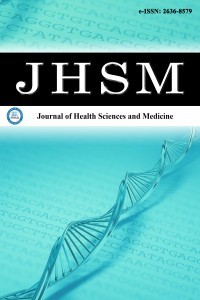1.
Fisher B, Anderson S, Bryant J, et al.Twenty-year follow-up of arandomized trial comparing total mastectomy, lumpectomy, andlumpectomy plus irradiation for the treatment of invasive breastcancer. N Engl J Med. 2002;347(16):1233-1241.
2.
Veronesi U, Cascinelli N, Mariani L, et al. Twenty-year follow-up of a randomized study comparing breast-conserving surgerywith radical mastectomy for early breast cancer. N Engl J Med.2002;347(16):1227-1232
3.
Eric I, Petek Eric A, Koprivcic I, Babic M, Pacaric S, Trogrlic B.Independent factors for poor prognosis in young patients withstage I-III breast cancer. Acta Clin Croat. 2020;59(2):242-251.
4.
Montagna G, Morrow M. Breast-conserving surgery withoutradiation therapy for invasive cancer. Clin Breast Cancer.2021;21(2):112-119. doi: 10.1016/j.clbc.2021.01.001.
5.
Veronesi U, Banfi A, Salvadori B, et al. Breast conservation is thetreatment of choice in small breast cancer: long-term results of arandomized trial. Eur J Cancer Clin Oncol. 1990;26(6):668-270.
6.
Waljee JF, Hu ES, Newman LA, Alderman AK. Predictors of re-excision among women undergoing breast-conserving surgery forcancer. Ann Surg Oncol. 2008;15:1297-1303.
7.
Ozmen V, Ozmen T, Dogru V. Breast cancer in Turkiye; ananalysis of 20.000 patients with breast cancer. Eur J Breast Heal.2019;15(3):141-146.
8.
Mullenix PS, Cuadrado DG, Steele SR, et al. Secondary operationsare frequently required to complete the surgical phase of therapyin the era of breast conservation and sentinel lymph node biopsy.Am J Surg. 2004;187(5):643-646.
9.
Nayyar A, Gallagher KK, McGuire KP. Definition and managementof positive margins for invasive breast cancer. Surg Clin North Am.2018;98(4):761-771.
10.
Sickles EA, D’Orsi CJ, Bassett LW, Appleton CM, Berg WA, BurnsideES. ACR BI-RADS® Atlas, Breast imaging reporting and data system.Reston, VA: American College of Radiology. 2013;5:39-48.
11.
Wilkinson L, Thomas V, Sharma N. Microcalcification onmammography: approaches to interpretation and biopsy. Br JRadiol. 2016;90(1069):20160594.
12.
Chansakul T, Lai KC, and Slanetz PJ. The postconservation breast:part 2, imaging findings of tumor recurrence and other long-termsequelae. AJR Am J Roentgenol. 2012;198(2):331-343.
13.
Gunhan-Bilgen I, Oktay A. Management of microcalcificationsdeveloping at the lumpectomy bed after conservative surgery andradiation therapy. AJR Am J Roentgenol. 2007;188(2):393-398.
14.
Liberman L, Van Ze KJ, Dershaw DD, et al. Mammographicfeatures of local recurrence in women who have undergonebreast-conserving therapy for ductal carcinoma in situ. AJR.1997;168(2):489-493.
15.
Chetty U, Kirkpatrick AE, Anderson TL, et al. Localization andexcision of occult breast lesions. Brit J Surg. 1983;70(10):607-610.
16.
Moskowitz M. The predictive value of certain mammographicsigns in screening for breast cancer. Cancer. 1983;51(6):1007-1010.
17.
Feig SA. Mammographic evaluation of calcifications. RSNACategorial Course in Breast Imaging. 1995:93-105.
18.
Dershaw DD, Giess CS, McCormick B, et al. Patterns ofmammographically detected calcifications after breast-conserving therapy associated with tumor recurrence. Cancer.1997;79(7):1355-1362.
19.
Park WJ, Kim EK, Moon HJ. Breast ultrasonography for detectionof metachronous ipsilateral breast tumor recurrence. Acta Radiol.2016;57(10):1171-1177.
20.
Constantini M, Belli P, Lombardi R, et al. Characterization ofsolid breast masses: use of sonographic breast imaging reportingand data system lexicon. J Ultrasound Med. 2006;25(5):649-659.
21.
Hong AS, Rosen ER, Soo MS, Baker JA. BI-RADS for sonography:positive and negative predictive values of sonographic features.AJR. 2005;184(4):1260-1265.
22.
Bartram A, Gilbert F, Thompson A, Mann GB, Agrawal A. BreastMRI in DCIS size estimation, breast-conserving surgery andoncoplastic breast surgery. Cancer Treat Rev. 2021;94:102158.
23.
Sardanelli F, Trimboli RM, Houssami N, et al. Magnetic resonanceimaging before breast cancer surgery: results of an observationalmulticenter international prospective analysis (MIPA). EurRadiol. 2022;32(3):1611-1623.
24.
Belli P, Costantini M, Romani M, Marano P, Pastore G. Magneticresonance imaging in breast cancer recurrence. Breast Cancer ResTreat. 2002;73:223-235. doi.org/10.1023/A:1015868406986
25.
Preda L, Villa G, Rizzo S, et al. Magnetic resonance mammographyin the evaluation of recurrence at the prior lumpectomy siteafter conservative surgery and radiotherapy. Breast Cancer Res.2006;8(5):R53
26.
Giess CS, Poole PS, Chikarmane SA, Sippo DA, Birdwell RL.Screening breast MRI in patients previously treated for breastcancer: diagnostic yield for cancer and abnormal interpretationrate. Acad Radiol. 2015;22(11):1331-1337.
27.
Gweon HM, Cho N, Han W, et al. Breast MR imaging screening inwomen with a history of breast conservation therapy. Radiology.2014;272(2):366-373.
28.
Lehman CD, Lee JM, DeMartini WB, et al. Screening MRI inwomen with a personal history of breast cancer. J Natl Cancer Inst.2016;108(3):djv349.
29.
Vardanian AJ, Clayton JL, Roostaeian J, et al. Comparison ofimplant-based immediate breast reconstruction with and withoutacellular dermal matrix. Plast Reconstr Surg. 2011;128(5):403e-410e.
30.
Gorechlad JW, McCabe EB, Higgins JH, et al. Screening forrecurrences in patients treated with breast-conserving surgery:is there a role for MRI? Ann Surg Oncol. 2008;15:1703-1709. doi.org/10.1245/s10434-008-9832-2
31.
Urano M, Nishikawa H, Goto T, et al. Digital mammographicfeatures of breast cancer recurrences and benign lesionsmimicking malignancy following breast-conserving surgery andradiation therapy. Kurume Med J. 2020;65(4):113-121.

